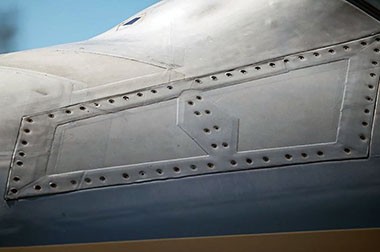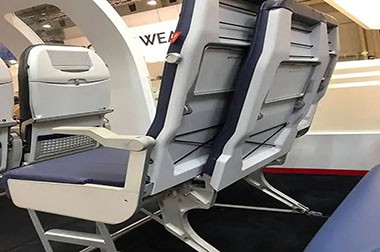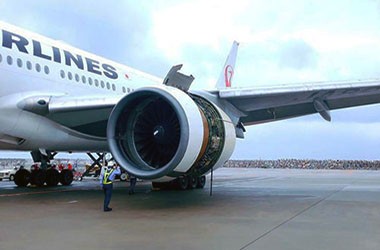2024 T351 Aluminum Plate
2024-T351 aluminum plate is a high-strength, highly durable aluminum alloy sheet widely used in aerospace, transportation, and other structural components where high strength and resistance to metal fatigue are critical. It is a specific temper of 2024 aluminum, which undergoes a series of precise heat treatment and stress-relief processes, providing excellent mechanical properties and durability.
What is 2024 T351 aluminum?
2024 T351 aluminum is a high-strength alloy that has undergone solution heat treatment, stress relief, and natural aging. It is suitable for applications requiring high strength and fatigue resistance, such as aircraft structures, military vehicles, and other high-performance applications.
- Solution Heat Treatment: The 2024 aluminum alloy is heated to a specific temperature to ensure that the alloying elements dissolve uniformly, placing it in a high-temperature state.
- Stress Relief: The 2024 aluminum plate is stretched to a certain extent to relieve internal stresses. The amount of stretching varies depending on the product form (such as thin sheets, plates, bars, or forgings). Stress relief helps improve the uniformity and stability of the alloy, reducing deformation during later processing.
- Natural Aging: After solution heat treatment, the 2024 aluminum alloy naturally ages at room temperature, further enhancing its strength and hardness.
2024 T351 Aluminum Information
| Property | Description |
| Alloy | 2024 |
| Temper | T351 (Solution Heat Treatment + Stress Relief + Natural Aging) |
| Solution Heat Treatment | The 2024 aluminum alloy is heated to a specific temperature to ensure that the alloying elements dissolve uniformly. |
| Stress Relief | The aluminum alloy plate is stretched to a certain extent to relieve internal stresses. The amount of stretching depends on the product form (such as thin sheets, plates, bars, or forgings). |
| Natural Aging | After solution heat treatment, the aluminum alloy naturally ages at room temperature, increasing its strength and hardness. |
| Metal Fatigue Resistance | Extremely strong resistance to metal fatigue, capable of withstanding long-term repetitive loads and high-stress environments without fracturing. |
| Corrosion Resistance | Fair, typically requiring additional coatings to enhance corrosion resistance. |
| Main Applications | Aerospace (aircraft fuselage, wing structures, etc.), automotive (high-performance cars, racing engine components, etc.), military (high-strength structural parts), etc. |
| Machinability | Good machinability, but due to its high strength, more advanced equipment may be needed for machining. |
| Weldability | Special attention is needed during welding to control the heat-affected zone and avoid stress concentration. |
| Main Advantages | High strength, excellent metal fatigue resistance, suitable for structural components subjected to high stress and repeated loads. |
2024-T351 Aluminum Properties
2024 T351 aluminum combines high strength with excellent fatigue resistance, making it an ideal choice for structural components in high-stress applications, especially in aerospace. While it has moderate corrosion resistance, proper corrosion protection can be applied.
| Property | Description |
| Strength | 2024-T351 aluminum alloy has high strength due to its higher copper content, especially when compared to other aluminum alloys. |
| Fatigue Resistance | The alloy exhibits excellent fatigue resistance, making it suitable for structural components subjected to repetitive loads, such as aircraft structures. |
| Lightweight | With a density of 2.78 g/cm³, it is relatively light, making it ideal for applications where weight is a critical factor, particularly in aerospace. |
| Corrosion Resistance | It performs well in many environments, but is more prone to corrosion compared to alloys like 7050 or 6061, requiring additional surface treatment in harsh environments. |
| Machinability | It has good machinability, but due to its higher strength, it may be more difficult to machine than other lower-strength alloys. |
| Application Suitability | Mainly used in aerospace (aircraft fuselage, wings), military, and automotive industries, especially in applications requiring high strength, fatigue resistance, and low weight. |
2024 T351 Aluminum Supplied Forms
Aluminum Plate 2024-T351
This refers to the 2024 aluminum alloy in the T351 temper as a flat, thick, or solid plate. 2024 aluminum is known for its high strength and excellent fatigue resistance, making it ideal for aerospace and military applications. The T351 temper is achieved through solution heat treatment followed by stretching, which enhances its mechanical properties, such as improved yield strength and stress resistance.
- Applications: This product is commonly used in aerospace structures, aircraft skins, wing and fuselage components, and other high-stress structural parts.
- Properties: High strength, excellent fatigue resistance, moderate machinability, and good stress-corrosion cracking resistance.
Flat 2024-t351 Cold Finished
This refers to 2024 aluminum that has been cold-finished into a flat shape. Cold finishing refers to the process where the aluminum is rolled or drawn at room temperature to achieve a smooth, precise surface finish and exact dimensional tolerances. T351 indicates that the material has undergone solution heat treatment and stretching to reduce residual stress.
- Applications: It is used in applications where precise thickness, flatness, and surface finish are critical, such as in the aerospace industry for structural parts, frames, and load-bearing components.
- Properties: The material retains its high strength and fatigue resistance, but cold finishing gives it a superior surface quality and uniformity, ideal for tight-tolerance applications.
Aluminum 2024-T351 Sheet
This is 2024 aluminum alloy processed into a sheet form and in the T351 temper. The sheet is generally thinner than a full plate and is typically used where a combination of strength and formability is required. Like the flat plate, the material has undergone solution heat treatment and stretching, which ensures high strength and dimensional stability.
- Applications: This form is used in aerospace and defense sectors for skin panels, fuselage frames, and other high-strength structural applications. It's also used in high-stress, fatigue-prone environments where both strength and lightweight characteristics are needed.
- Properties: High strength, moderate corrosion resistance, excellent fatigue resistance, and good machinability.
Aluminum 2024 T351 Material Data Sheet
| Physical Properties | Metric | English | Comments |
| Density | 2.78 g/cc | 0.1 lb/in³ | AA; Typical |
| Mechanical Properties | |||
| Hardness, Brinell | 120 | 120 | AA; Typical; 500 g load; 10 mm ball |
| Hardness, Knoop | 150 | 150 | Converted from Brinell Hardness Value |
| Hardness, Rockwell A | 46.8 | 46.8 | Converted from Brinell Hardness Value |
| Hardness, Rockwell B | 75 | 75 | Converted from Brinell Hardness Value |
| Hardness, Vickers | 137 | 137 | Converted from Brinell Hardness Value |
| Ultimate Tensile Strength | 469 MPa | 68000 psi | AA; Typical |
| Tensile Yield Strength | 324 MPa | 47000 psi | AA; Typical |
| Elongation at Break | 19 % | 19 % | AA; Typical; 1/2 in. (12.7 mm) Diameter |
| Elongation at Break | 20 % | 20 % | AA; Typical; 1/16 in. (1.6 mm) Thickness |
| Modulus of Elasticity | 73.1 GPa | 10600 ksi | AA; Typical; Average of tension and compression. Compression modulus is about 2% greater than tensile modulus. |
| Ultimate Bearing Strength | 814 MPa | 118000 psi | Edge distance/pin diameter = 2.0 |
| Bearing Yield Strength | 441 MPa | 64000 psi | Edge distance/pin diameter = 2.0 |
| Poisson's Ratio | 0.33 | 0.33 | |
| Fatigue Strength | 138 MPa | 20000 psi | AA; 500,000,000 cycles completely reversed stress; RR Moore machine/specimen |
| Fracture Toughness | 26 MPa-m½ | 23.7 ksi-in½ | K(IC) in S-L Direction |
| Fracture Toughness | 32 MPa-m½ | 29.1 ksi-in½ | K(IC) in T-L Direction |
| Fracture Toughness | 37 MPa-m½ | 33.7 ksi-in½ | K(IC) in L-T Direction |
| Machinability | 70 % | 70 % | 0-100 Scale of Aluminum Alloys |
| Shear Modulus | 28 GPa | 4060 ksi | |
| Shear Strength | 283 MPa | 41000 psi | AA; Typical |
| Electrical Properties | |||
| Electrical Resistivity | 5.82e-006 ohm-cm | 5.82e-006 ohm-cm | AA; Typical at 68°F |
| Thermal Properties | |||
| CTE, linear 68°F | 23.2 µm/m-°C | 12.9 µin/in-°F | AA; Typical; Average over 68-212°F range. |
| CTE, linear 250°C | 24.7 µm/m-°C | 13.7 µin/in-°F | Average over the range 20-300ºC |
| Specific Heat Capacity | 0.875 J/g-°C | 0.209 BTU/lb-°F | |
| Thermal Conductivity | 121 W/m-K | 840 BTU-in/hr-ft²-°F | AA; Typical at 77°F |
| Melting Point | 502 - 638 °C | 935 - 1180 °F | AA; Typical range based on typical composition for wrought products 1/4 inch thickness or greater. Eutectic melting is not eliminated by homogenization. |
| Solidus | 502 °C | 935 °F | AA; Typical |
| Liquidus | 638 °C | 1180 °F | AA; Typical |
| Processing Properties | |||
| Annealing Temperature | 413 °C | 775 °F | |
| Solution Temperature | 256 °C | 493 °F | |
Applications of 2024-T351 Aluminum Plate
2024-T351 aluminum plate is commonly used in the following fields due to its outstanding strength, metal fatigue resistance, and durability:
- Aerospace: Especially in the manufacturing of aircraft structures, fuselage frames, wing structures, skin panels, aircraft landing gear, and other high-stress components.
- Automotive Industry: Particularly in the production of high-performance cars, racing vehicles, and racing engine components, where high strength is required alongside lightweight properties.
- Military Applications: Used in the manufacture of high-strength structural components and military vehicle parts.
- Transportation Industry: Suitable for high-load transport vehicles, such as trucks, trains, and ship structural components.
2024-T351 aluminum alloy plate is a high-strength, durable material, particularly suited for structural components subjected to high stress and fatigue. Its excellent metal fatigue resistance, superior mechanical properties, and moderate machinability make it widely used in aerospace, military, automotive, and other industries. Although its corrosion resistance is relatively weak, with proper surface treatment, 2024-T351 aluminum alloy can meet the demanding requirements of harsh environments, making it an ideal structural material.
2024-T351 vs 6061 Comparison
While 6061 aluminum alloy is cost-effective, lightweight, and has good corrosion resistance, it is not as strong or stress-resistant as 2024-T351. Therefore, 2024-T351 is more suitable for heavy-duty applications, such as in the aerospace industry. However, 6061 remains a good choice for many general industrial applications.
| Properties | 2024-T351 Aluminum Alloy | 6061 Aluminum Alloy |
| Strength and Durability | Contains a higher proportion of copper, providing excellent strength and stress resistance, suitable for high-strength applications. | Primarily alloyed with silicon and magnesium, its strength is slightly lower than 2024-T351 but still provides good mechanical properties. |
| Corrosion Resistance | Offers good corrosion resistance, suitable for environments requiring resistance to corrosion. | In some cases, particularly in marine or humid environments, it offers superior corrosion resistance. |
| Applications | Primarily used in aerospace, military, and high-performance mechanical components requiring high strength. | Suitable for structural components, building materials, automotive parts, and other everyday applications, meeting certain strength requirements but not suited for extreme loads. |








